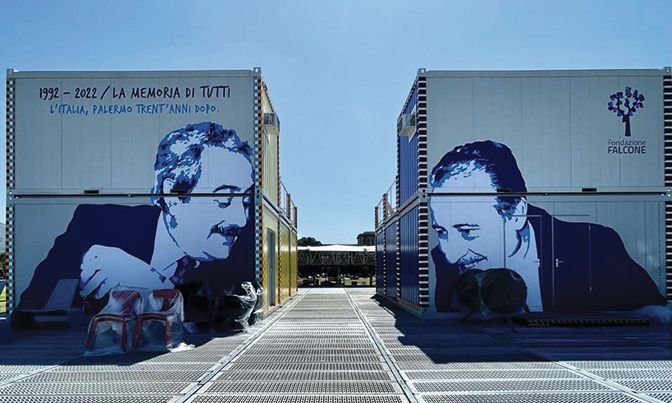In 2022 public art around Palermo commemorated the 30th anniversary of the murder of Giovanni Falcone
© Fondazione Falcone
Italy plans to open a multi-site mafia museum recounting “the stories and sacrifice” of the country’s fight against organised crime, organisers say. The first site in Palermo, a former stronghold of the Sicilian mafia, is billed to open this spring. Displays will include works loaned by major Italian museums and archival material such as documents, films and photographs. Sounds and smells will also be used to help visitors relive key moments from mafia history.
The museum was dreamt up by the anti-mafia charity Fondazione Falcone and will be created with both private and public funds. It follows on from a major public art project staged in Palermo by the foundation last year, in which bold displays around the city—including a tree lying in a roofless church with carved figures of mafia victims stuck to its leafless branches, and an automated digger arm gouging a cement base—marked the 30th anniversary of the murder of anti-mafia judge Giovanni Falcone with a car bomb in Palermo.
The first site of the new museum will be housed in the 18th-century neoclassical Palazzo Jung in Palermo. Its inauguration will coincide with this year’s anniversary of the murder of Falcone, on 23 May, Alessandro De Lisi, the curator, tells The Art Newspaper. Two further sites will include a museum in a historic residential building in central Rome that was confiscated from the mafia, and a co-working space in Bolzano for art and design professionals, as well as political and environmental researchers.
“It will not simply be a museum of memory but also a dynamic place where people can meet,” Maria Falcone, the sister of the late Giovanni and the president of the Fondazione Falcone, said in a press release for the museum’s Palermo site. “This, for us, is a way of recognising the courage of a city that over the years has found the strength to stand up to criminal activity, with civic passion, social responsibility and cultural independence.”

